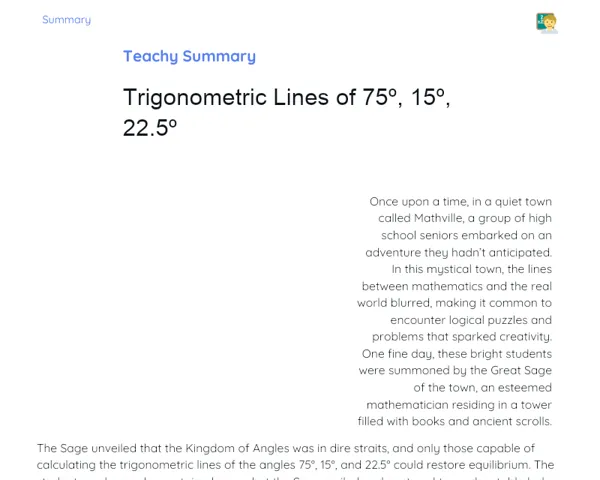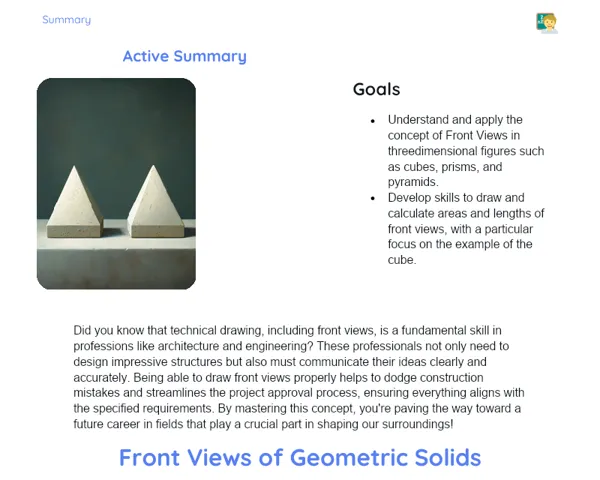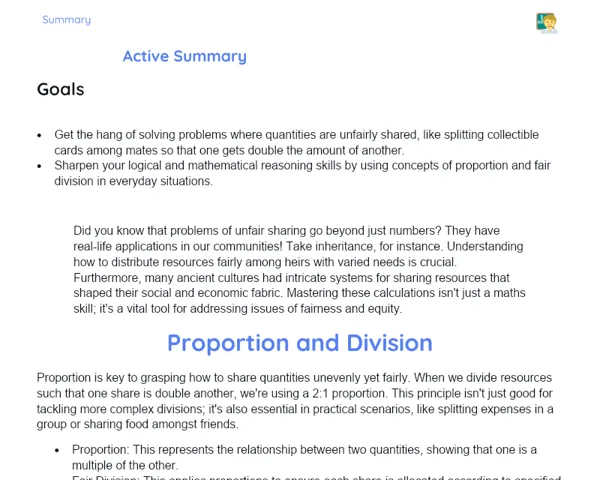Socioemotional Summary Conclusion
Goals
1. Learn how to calculate the least common multiple (LCM) of two or more numbers.
2. Use your LCM knowledge to tackle practical problems, like calculating equivalent fractions or figuring out when two runners on a track will cross paths again.
3. Recognise and manage your emotions while grappling with new concepts and math challenges, developing strategies for expressing and regulating those feelings in a healthy manner.
Contextualization
Did you know that grasping the LCM concept actually helps us in many aspects of our daily lives? Picture two people starting their jog at the same time on a track, but moving at different speeds. When will they meet again? 🏃♂️🏃♀️ By calculating the LCM, you can figure this out and much more! Are you ready to embark on this exciting journey and explore these mysteries alongside your emotions? Let's dive in!
Exercising Your Knowledge
Introduction to LCM
Let's get started by nailing the basics: the least common multiple (LCM). The LCM is the smallest whole number that is a multiple of two or more numbers. For instance, if we list the multiples of 4 (4, 8, 12, 16, ...) and 6 (6, 12, 18, 24, ...), we'll find that the least common multiple is 12. Sounds easy enough, right? But mastering this concept will enable you to tackle various mathematical problems much more effectively!
-
Definition: The LCM is the smallest whole number that is a multiple of two or more numbers.
-
Example: The multiples of 4 and 6 both include 12 as their LCM.
-
Importance: It simplifies problems related to equivalent fractions and cycles in repetitive events.
Prime Factorization
Let’s delve into a powerful technique for finding the LCM: prime factorization. This method involves breaking numbers down into their prime factors and using these factors to calculate the LCM. It aids in understanding how numbers are structured and is an essential tool for solving various mathematical problems.
-
Definition: Prime factorization involves decomposing a number into its prime constituents.
-
Process: To find the LCM of 12 and 18, we can factor 12 as 2² x 3 and 18 as 2 x 3².
-
Application: Use both the common and unique factors at their greatest exponent to calculate the LCM, which in this case gives us 2² x 3² = 36.
GCD Method
Another interesting way to find the LCM is by using the Greatest Common Divisor (GCD). The relationship between LCM and GCD is described by the formula: LCM(a, b) = |a * b| / GCD(a, b). This method is particularly handy for more complicated problems.
-
Definition: The GCD of two numbers is the largest number capable of dividing them without leaving a remainder.
-
Formula: LCM(a, b) = |a * b| / GCD(a, b).
-
Example: To find the LCM of 8 and 12, we first determine the GCD (which is 4) and subsequently apply the formula: (8 * 12) / 4 = 24.
Practical Applications
Learning about the LCM isn't just about theory. Let’s see how to put this knowledge to practical use, such as calculating equivalent fractions or solving everyday challenges. For instance, to add fractions like 1/3 and 1/4, we’d use the LCM to find a common denominator.
-
Equivalent Fractions: Finding a common denominator with the LCM simplifies adding and subtracting fractions.
-
Everyday Problems: Determining when periodic events align, like when two joggers run at different speeds.
-
Challenges: Applying LCM in various contexts reinforces understanding.
Key Terms
-
LCM: Least Common Multiple, the smallest whole number that is a multiple of two or more numbers.
-
Prime Factors: Prime numbers that combine to form a specific number.
-
GCD: Greatest Common Divisor, the largest number that can divide two or more numbers without leaving a remainder.
For Reflection
-
How did you feel when tackling problems involving LCM? Were there moments of frustration or triumph?
-
What strategies did you implement to manage your emotions while learning about LCM? Were they effective?
-
How can what you learned about LCM apply to other aspects of your daily life? Can you think of an example?
Important Conclusions
-
Understanding the least common multiple (LCM) opens doors to solving various everyday mathematical challenges, such as working with fractions and synchronising periodic events.
-
Learning to calculate the LCM not only sharpens our math skills but also equips us to approach challenges with confidence and clarity.
-
Recognising and managing our emotions during learning fosters resilience, helping us navigate tough situations.
Impacts on Society
Grasping and applying the LCM concept has tangible effects on our everyday lives. For instance, when adding fractions or figuring out the timing of periodic events, we’re employing the LCM. Think about regular commitments that require efficient synchronisation; understanding LCM can help you better manage your time and activities.
Moreover, mastering LCM also enhances your capacity to solve intricate problems. This sense of achievement can empower you and reduce the intimidation factor of challenges. In a world where mathematics is an essential tool, being able to apply concepts like the LCM can boost your self-assurance and create new opportunities, both academically and personally.
Dealing with Emotions
To aid you in managing your emotions while studying LCM, I suggest an exercise based on the RULER method. Start by finding a quiet space to reflect on how you feel when faced with LCM problems. Acknowledge those feelings without judgement. Then, try to identify the root cause of those emotions: is the challenge overwhelming or do you feel pressured? Accurately name your emotion, be it anxiety or frustration. Next, think of healthy ways to express these feelings, whether it’s chatting to someone or journaling. Lastly, regulate those emotions by practising breathing techniques or taking regular breaks. This exercise will help make your learning journey more effective and less stressful.
Study Tips
-
Create a study timetable to review LCM in various contexts, such as fractions and real-life issues. This will help cement your understanding.
-
Practice with a range of exercises, not just the ones assigned in class. Seek out alternative resources like video tutorials and interactive educational games.
-
Team up with friends for study sessions! Solving problems together not only makes the task less daunting but also allows for sharing of problem-solving strategies and emotional support.



